Chapter 15: Calendar Objects, Tasks, Notes, and Journal Entries
In this chapter, you will learn how to work with calendars, appointments, and events, as well as how to set up meeting response options and arrange calendars and calendar groups. Additionally, you will learn how to work with tasks and how to assign them to other Outlook users and track them via the status report tool.
This chapter also includes a section on journal entries, which you can use to create and track items such as telephone calls, tasks, and documents relating to a specific client on a timeline. This is particularly useful if you need to record the time spent on certain tasks in Outlook.
In this chapter, we will cover the following topics:
- Working with the calendar, appointments, and events
- Modifying meeting requests and manipulating the calendar pane
- Creating and managing tasks
- Creating and manipulating notes and journal entries
- Setting out-of-office options
Technical requirements
To work through this chapter, you need to have prior knowledge of the Outlook 2021 interface and settings options. In addition, you need to be confident in creating and sending mail and managing the mail environment. You should be able to insert, format, and attach items to elements within the interface. All of the examples used in this chapter can be accessed at https://github.com/PacktPublishing/Learn-Microsoft-Office-2021-Second-Edition.
Working with the calendar, appointments, meetings, and events
This section will cover the process of setting up appointments (including events and meetings) and options, forwarding and printing appointments, scheduling a meeting with a message sender, and sharing a calendar.
Difference between meetings, events, and appointments
Let's outline the differences between meetings, events, and appointments so that you understand the use of each within the calendar:
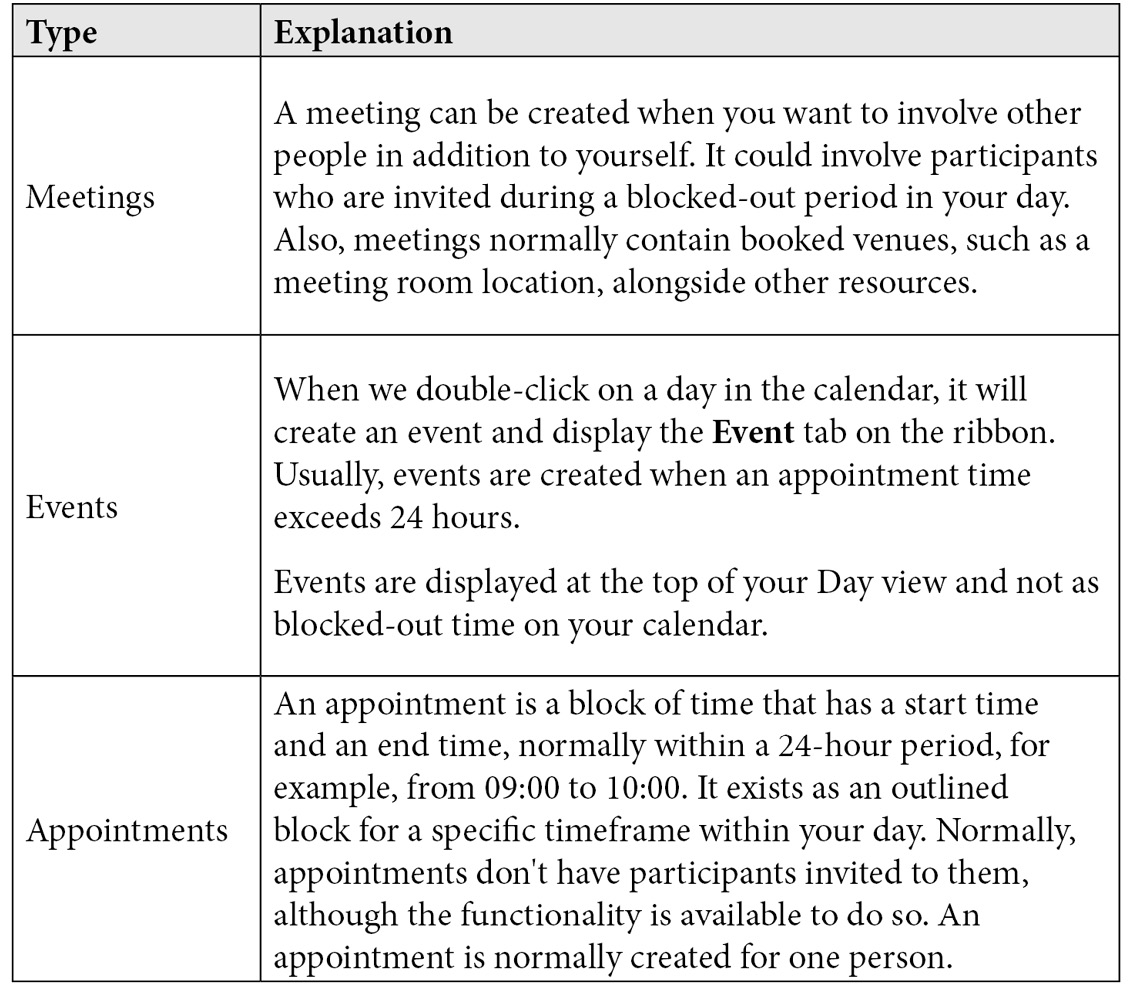
Table 15.1 – The differences between meetings, appointments, and events
We hope that you understand the differences between the three elements, as compared in the preceding table.
Creating and manipulating appointments or meetings
In this section, we will look at how to set up an appointment and use the Recurring Appointment option. Additionally, we will learn how to print your appointment details, invite participants, and forward an appointment to another recipient.
Setting the appointment options
- Locate the Calendar icon in the peek bar at the bottom of the Navigation Pane. As you place your mouse pointer over the Calendar icon, you will see the calendar peek detailing any meetings you have scheduled for the rest of the day:
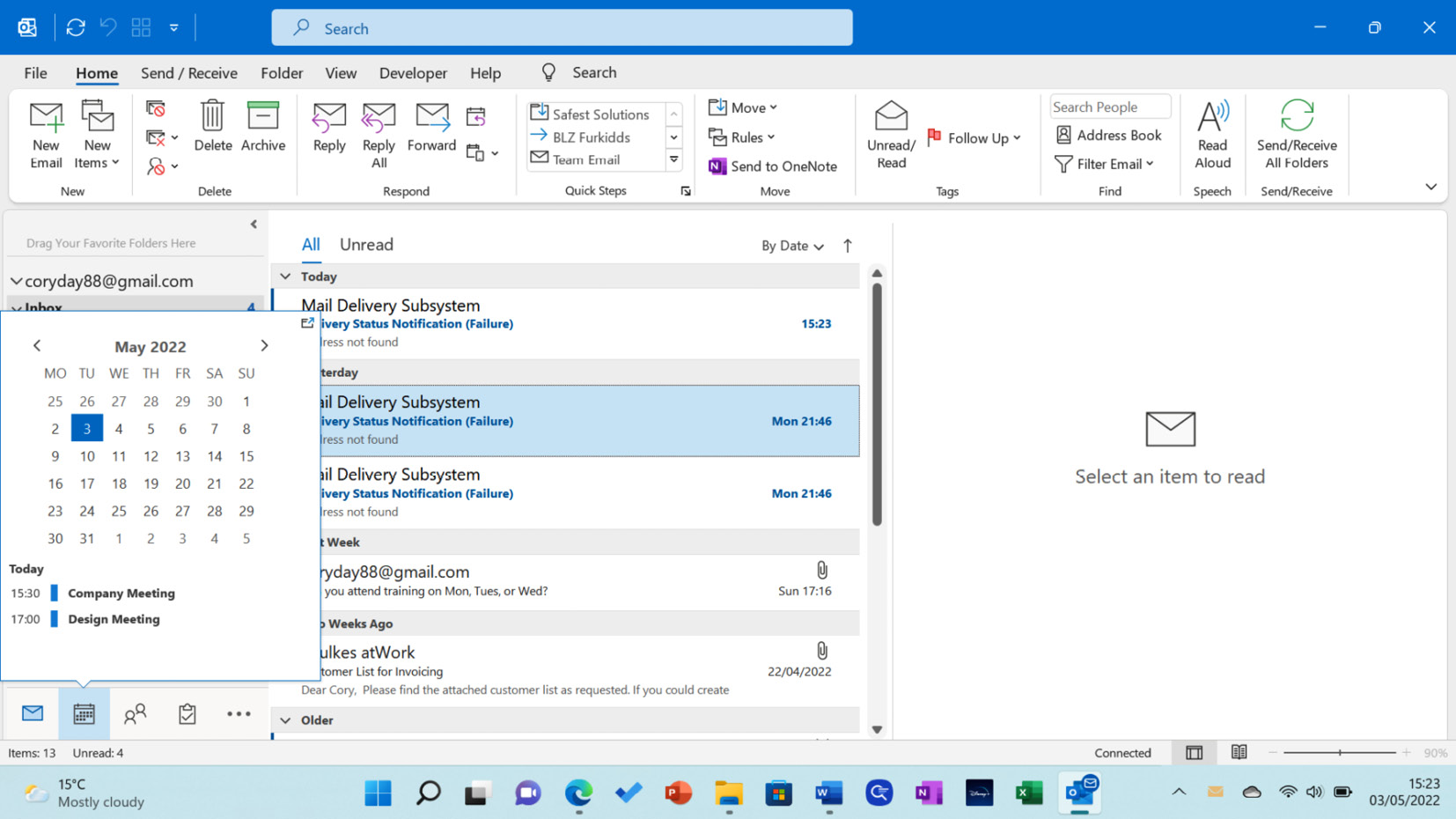
Figure 15.1 – The Calendar button
- From the Home tab, locate the New group. Click on New Appointment. Note that you can right-click or double-click directly on a day in the calendar to create a new appointment. If you are creating a meeting, click on New Meeting.
- To enter the start time and the end time of the appointment, make sure that All day event is not active (remove the tick from the option). Be careful to watch the A.M. and P.M. time slots, as you could end up setting your appointment to the wrong hour of the day. If your appointment will occur at the same time on certain days of the week for a certain period of time, then the recurring appointment option is perfect.
- Click on Recurrence on the Appointment tab to set the recurring appointment options. Click on OK to confirm the changes:

Figure 15.2 – Creating appointments
- To remove a recurring appointment, you need to open an appointment where the recurrence occurs. From the Appointment tab, select the Recurrence icon. At the bottom of the dialog box, choose Remove Recurrence.
- For Reminders, you will receive a pop-up reminder 15 minutes before an appointment begins. This reminder can be turned off or set for a longer period of time. You would probably miss someone's birthday party if you only have 15 minutes to get there or buy a gift! Additionally, you can assign a sound to your reminders.
- To format appointments, take a look at the Format Text tab when you create an appointment. All the options from the Word 2021 environment that you are used to can be accessed from here. WordArt can be inserted alongside files, Outlook items, tables, charts, pictures, clip art, SmartArt, screenshots, textboxes, drop caps, and objects. In addition, the horizontal line icon is available here. Remember to click inside the body of the email message prior to clicking on the Format Text tab.
- Note that at the end of the Appointment ribbon, there is a button named View Templates. This button is a great feature to formulate and house quick email responses (templates) to add to appointments or meetings, saving you lots of time:
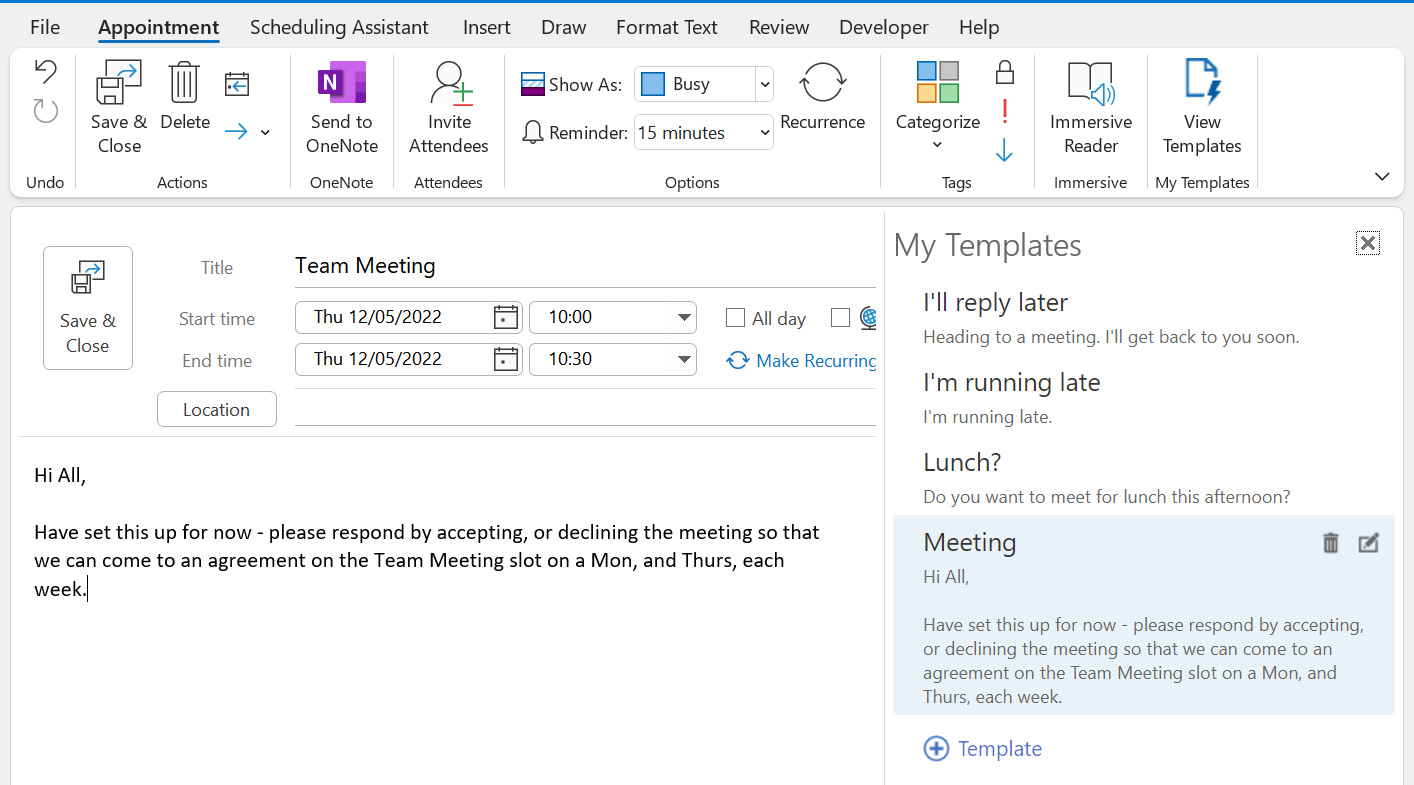
Figure 15.3 – Viewing templates
- Simply click on the template you would like to apply to the body of the appointment or meeting. The template is added to the message body. Note this is useful if you are using the Inviting Attendees option for the meeting or appointment.
- Click on Save & Close to add the appointment to the calendar.
Inviting participants to a meeting or appointment
- Open an existing meeting or appointment in your calendar or create a new appointment or a new meeting.
- Make sure you are in the Appointment tab, then click on Invite Attendees, after which the appointment will turn into a meeting. If you are creating a meeting, you can simply add the participants into the Required or Optional fields.
- As you start to enter the participants' names, the application will try to complete the names for you. This is especially useful if the participants already exist in your address book. To check whether the names you have typed into the field are correct, click on the Check Names icon, which is located in the Attendees group:

Figure 15.4 – Adding attendees
- Once you have filled in all the required fields, you can click on the Send button to send the meeting request to the attendees. The meeting request will arrive in their mailbox along with several buttons (Accept, Decline, Tentative, or reply to Propose New Time). It will also appear in their personal calendar:

Figure 15.5 – Responding to a new meeting request
- When we add attendees to our meeting, we can use the Scheduling Assistant tab to view the availability of all the attendees to find an available time slot during which to hold the meeting.
- The Scheduling Assistant tab contains a number of buttons to Add Rooms (resources), Add Attendees, and various categories along the bottom of the window detailing the different categories and color-coding settings:

Figure 15.6 – The Scheduling Assistant screen
In the next section, we will learn how to forward an appointment to others.
Forwarding an appointment
If you have been invited to a meeting, and think a co-worker can benefit from attending, it can be forwarded to others:
- Navigate to the calendar. Then, click on an appointment to select it.
- From the Appointment tab, click on the Forward icon:

Figure 15.7 – Forwarding appointments

Figure 15.8 – Adding the meeting as an attachment to forward to others
- Enter a recipient in the To: text area. Click on the Send icon to forward the message.
When we are creating a new meeting using Microsoft 365 or Outlook for the web, we can stop the forwarding of meetings to others.
- Create New Meeting and then click on Allow forwarding to deselect it and stop the recipients of the meeting from forwarding it on.
- Complete the meeting details and then Send the meeting as usual:

Figure 15.9 – The Office 365 Outlook meeting detailing Response options
In the next section, we will run through the steps for printing the appointment details if required.
Printing the appointment details
Although we can print the appointment details, this might not be something that is encouraged in a business or at home. Today, we have so many opportunities to work online, using our mobile phones, and gain access to remote meetings on the go when we travel or are at the office:
- Double-click on an appointment to view its details.
- From the File tab, choose the Print menu item.
- The appointment is displayed in Memo Style. Look at the preview pane to see the appointment details.
- Check that you are happy with the print settings and always check that you have the correct printer selected. A business could make use of specific printer software, such as PaperCut, to manage the print process. Click on the Print icon to send it to the printer.
Scheduling a meeting with someone who sent a message
- If you receive an email message from someone, for example, asking you for a coffee catch-up, you can create a meeting directly from the message. Double-click on the message to open it.
- On the Home tab, click on the Reply with Meeting icon to create an appointment in your calendar:

Figure 15.10 – The Reply with Meeting button
- The name of the recipient will automatically be inserted into the To: text area. Click on Send to add the appointment to your diary and send the meeting request to the recipient (that is, the person who sent you the email message in the first place).
Sharing a calendar
It is possible to share your calendar with other contacts and ask permission to gain access to their calendars. When sharing a calendar, we can choose to only share certain details, such as the Availability Only, Limited Details, or Full Calendar details. Outlook accounts can share calendars, but not IMAP accounts. This is only achieved if the account is added as a Microsoft Exchange account to Outlook:
- Open the calendar by clicking on the Calendar icon at the bottom of the Navigation Pane.
- Click on Share Calendar in the ribbon.
- Enter the name of the contact that you would like to grant access to your calendar:

Figure 15.11 – Sharing Outlook calendars
- Choose a sharing option from the Details drop-down list—either Availability Only, Limited Details, or Full Details access. For this example, we will choose Availability Only.
- When you have finished, click on Send:
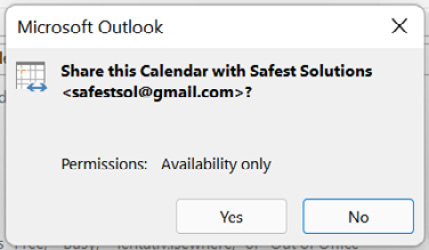
Figure 15.12 – Clicking on Yes to share your calendar
- A notification will pop up on the screen asking whether you are sure you want to share the calendar with the permissions you have granted. Click on Yes to continue.
Scheduling remote meetings
In the past couple of years, working remotely has escalated with many businesses choosing a blend of office and home working. We have the ability to schedule Zoom, Teams, and Skype meetings through our Outlook calendars. Currently, Microsoft Teams and Zoom are the two most popular tools available. Skype could be the default in your application, depending on whether you have this enabled or disabled if you are using the Microsoft 365 environment.
Outlook will display the Teams and/or Zoom meeting icons on the calendar's Home tab and in the New Appointment screen you are creating. If you do not see the New Teams Meeting icon in your Outlook environment, it could be that you are not signed into the Teams app on your desktop or the Teams add-in for Outlook has not been installed correctly:

Figure 15.13 – The New Teams Meeting icon on the Home tab
In the next section, we will concentrate on meeting options and responses.
Modifying meeting requests and manipulating the calendar pane
Now, you will learn how to set up a meeting request and look at the meeting response options. After sending out a meeting request, you can change the options to update or cancel a meeting, allowing recipients to propose a new time for the meeting. Next, we will look at how to view the tracking status and edit a meeting series. Additionally, this section will equip you with the skills to arrange your calendar views, change the calendar formats, display or hide calendars, and create a calendar group.
Setting the response options
Before sending a meeting request, you can set the response options. If you would like the recipient to be prompted to accept, reject, or tentatively accept the meeting request, then you need to check whether those options have been selected. Also, you can request a new time slot if the meeting time does not suit you. By default, both of these options should be activated in the Outlook program:
- Open your calendar and then select New Meeting from the New group. Once you have filled out the meeting details, you can set the response options:
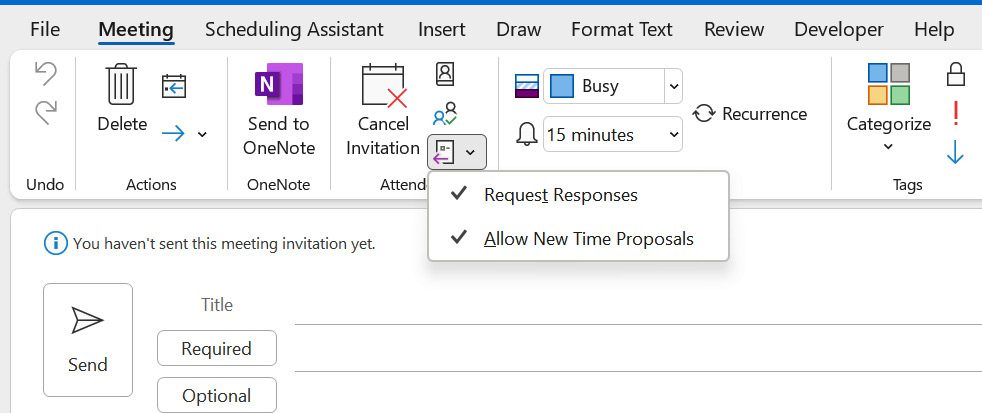
Figure 15.14 – The meeting response options
- From the Attendees group, select Response Options. You can choose Request Responses and/or Allow New Time Proposals. Both of these options are turned on by default.
Updating a meeting request
To update a meeting request, double-click on the appointment in your calendar. Once the appointment is open, change the details to update them. Once you are done, you need to click on the Send Update icon to resend the meeting to all of the recipients so that their calendars adjust accordingly.
Canceling a meeting or invitation
- Open the meeting that you need to cancel from your calendar.
- Click on the Cancel Meeting icon under the Meeting tab. Don't forget to click on Cancel Meeting. Then, click on the Send Cancellation button to send an update to the recipients:
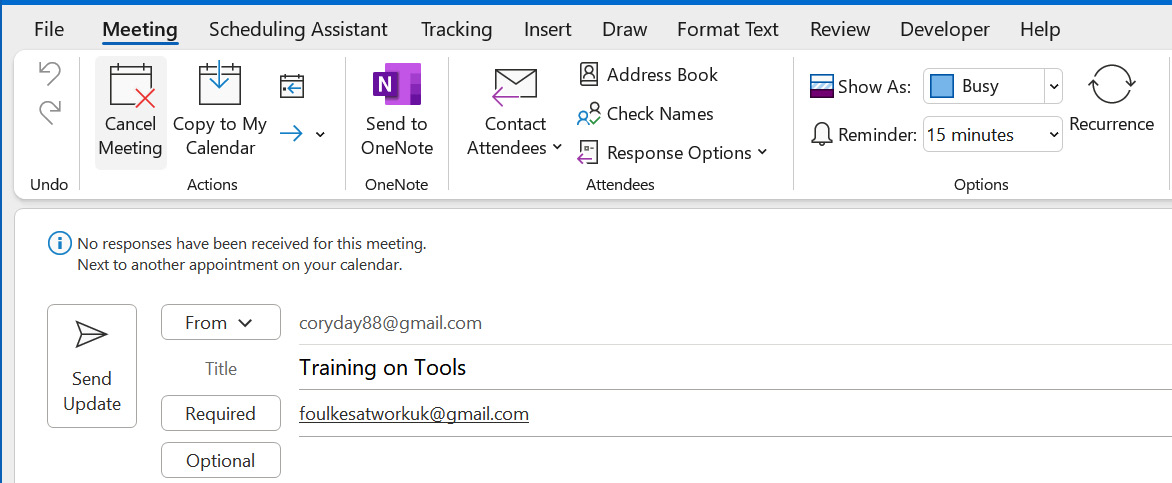
Figure 15.15 – Canceling a meeting and notifying the recipients
Next, let's learn how to suggest another time slot for a meeting.
Proposing a new time for a meeting
If you are unable to make the time of a meeting request, a new time can be proposed and sent to the sender:
- Open the meeting request from your inbox.
- Click on the Propose New Time icon on the Meeting tab or from the Respond area of the meeting.
- Choose either Tentative and Propose New Time or Decline and Propose New Time to select a time that you are available:

Figure 15.16 – Proposing a new time for a meeting
- Once you have selected a new proposed time using the drop-down arrows next to Meeting start time and Meeting end time, or you have used the AutoPick Next >> button to find the next available time slot, click on Propose Time to reply to the meeting request:
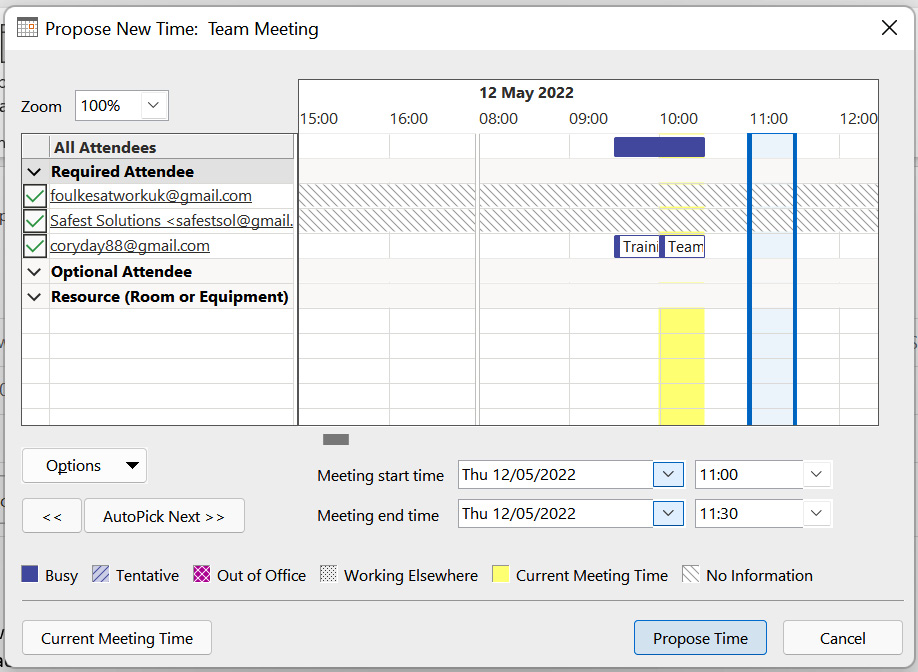
Figure 15.17 – Proposing a new time slot
- Once you have checked the invitation, click on Send to forward the email to participants to propose the new time slot.
The next section is extremely valuable if you are working with calendar appointments, meetings, and events for the majority of your day. Even though the Teams and Zoom platforms allow you to view an online attendance record, it is good to see, at a glance, who has responded to your meeting request.
Viewing the tracking status of a meeting
If you have sent a meeting request to a number of attendees and would like to see whether they have responded without having to check your email countless times, the Tracking feature is a wonderful tool to use:
- Click on the meeting entry in your calendar.
- Locate the Tracking tab to view the individual responses from recipients of the invite:

Figure 15.18 – The Tracking tab when viewing a meeting
- At the bottom of the window, you will see a summary of who has and who hasn't responded to your meeting request. Close the pane when you are finished.
Note
Note that you can also take a screenshot of the tracking detail by clicking on the Copy Status to Clipboard button and then pasting it into an Excel worksheet if required. This way, you can keep a record of meeting attendance. Remember that when working with online platforms, such as Teams and Zoom, we can download or access attendance reports after the meeting. We will concentrate on these, and more, features in the online meeting chapters that follow in this book.
Now, let's learn how to edit a series of meetings in one go.
Editing a meeting series
If you have set a recurring appointment and wish to edit the entire series, simply open the appointment. A dialog box will prompt you to choose whether you would like to edit the series or just the appointment you clicked on:
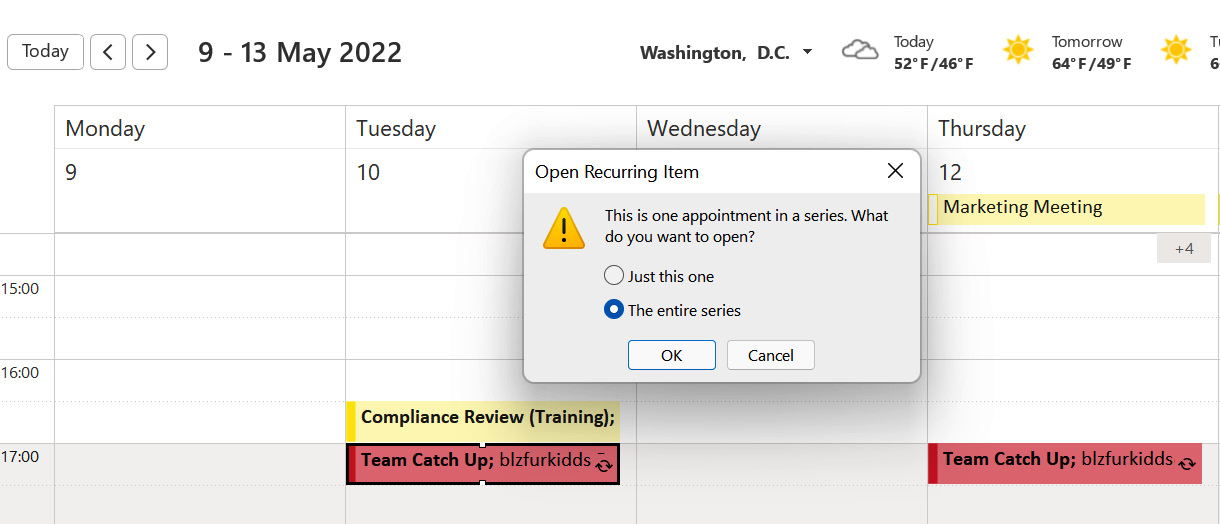
Figure 15.19 – Editing a recurring item in the calendar
Click on The entire series. Then, make the changes to the appointment. Click on Save & Close once you are done to update the series.
In the next section, we will look at how to quickly add participants or contacts to meetings.
Using the @ mention feature
To quickly add contacts to an email or meeting, simply type the @ sign followed by the name of the contact. A drop-down list will appear with matching contacts. Press Tab on the keyboard to automatically populate the contact. The contact is then automatically added as an attendee to the meeting:

Figure 15.20 – The @ mention feature
In the next section, let's investigate some calendar settings.
Manipulating the calendar pane
Just like any other view in Outlook, we can manipulate the calendar's elements, such as the font settings and the color, and arrange the way the calendar entries are displayed. Let's investigate these options in the following sections.
First, let's look at how appointments and meetings are scheduled by default.
Setting the default meeting and appointment duration
We can set the default duration for meetings and appointments in Outlook. The default setting is set to 30 minutes. To change this setting so that all appointments and meetings are created with a 1-hour duration, visit the File | Options | Calendar settings in Outlook. Navigate to the Calendar options heading and then change the Default duration for new appointments and meetings setting to 1 hour. Click on the OK button to commit to this change.
Create a new appointment in the calendar—note that the default duration is now set to 1 hour.
Microsoft 365 also offers the ability to End appointments and meetings early by adjusting the meeting time to allow meeting durations of less than 1 hour, or longer than 1 hour, to end earlier:
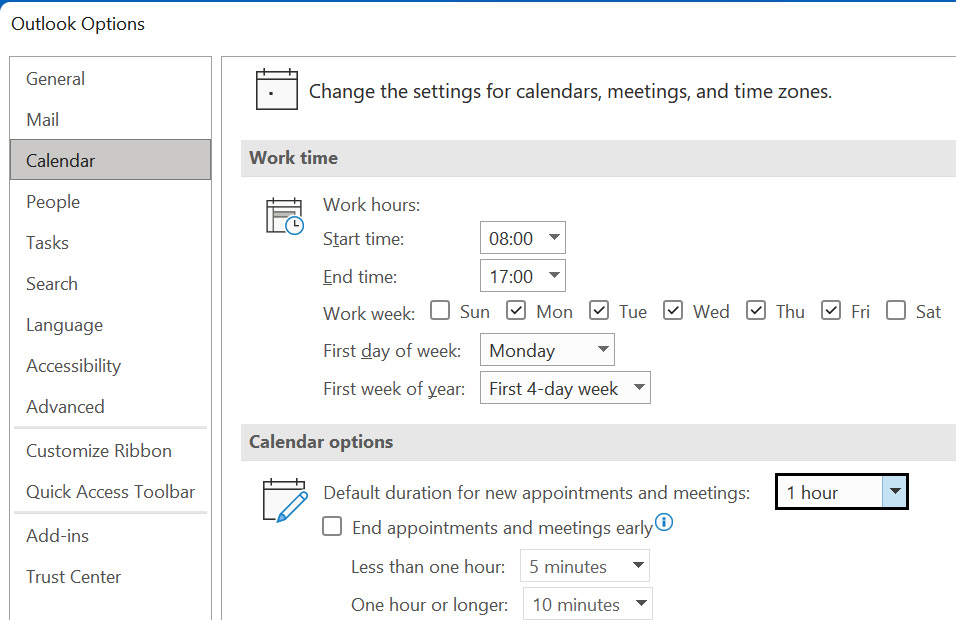
Figure 15.21 – The Outlook calendar options
This is a perfect setting to adjust when booking calendar appointments for conferences, for example, to allow participants to move to the next venue with enough time to make the next meeting.
This option is located just below the Default duration for new appointments and meetings option. Click on the End appointments and meetings early checkbox, then enter the appropriate duration into either the Less than one hour or One hour or longer drop-down list.
Once this setting has been applied, the appointment details for all activities in the calendar will update to the new end time accordingly. Take a look at the following screenshot:

Figure 15.22 – Ending appointments and meetings early
In the next section, we will concentrate on learning about further calendar options.
Arranging the calendar view
The default calendar view in Outlook is set to Month. When you open the calendar from the bottom of the Navigation Pane, you will notice that the View tab is available for the Calendar arrangement. Click on Day, Work Week, Week, Month, or Schedule View to display the calendar in your preferred format.
Schedule View displays the calendar horizontally. You can use Schedule View when viewing multiple calendars, as this view allows more space on the interface window. The calendar arrangement options are also available under the Home tab.
Changing the calendar color
Applying color to the calendar elements is easy; simply use the Color button on the View tab. In addition, Conditional Formatting can be applied for more color-specific calendar changes. Let's look at both of them:
- Click on the Calendar icon at the bottom of the Navigation Pane to access the calendar.
- From the Color group under the View tab, select the Color icon. A drop-down list of colors will appear. Select a color to apply to your calendar.
- The calendar will update to the chosen color. Additionally, the color of the calendar can be set in the Outlook Options dialog box.
Changing the calendar's font settings
To change the calendar's font settings and the other Day, Week, and Month view settings, click on the View Settings icon when viewing the calendar. Choose Other Settings... from the Advanced View Settings: Calendar dialog box that appears on your screen. From the Format Calendar dialog box, choose Font... to apply changes to the font and size attributes. Note that you can also set Time scale for Day and Week View:

Figure 15.23 – Changing the calendar appointments' font
In the next section, we will look at how to display and hide calendars.
Displaying or hiding calendars
It is extremely useful to be able to hide or show calendars when working with others from the same or external organizations. If you have access to someone's calendar, you can show or hide it in your calendar view. You can send an invitation to others so that they can access your calendar in the contacts list within Outlook. This is only possible with an Exchange, Microsoft 365, or Outlook.com account:
- At the bottom of the calendar folder pane, you will notice a number of different calendar headings. The first is My Calendars, the second is Other Calendars, and the third is Shared Calendars. In the following screenshot, Calendar - [email protected] is visible because that particular calendar has been selected:

Figure 15.24 – The calendar categories in the Outlook Calendar view
- To view another calendar alongside your personal calendar, click on it from the Shared Calendars folder to view it. You will notice that you also have access to the Safest Solutions calendar, as it is listed under Shared Calendars:

Figure 15.25 – Shared Calendars
- Once you check a calendar to add it (in this example, Safest Solutions), the calendar is shown on the right-hand side of your personal calendar. At times, the calendar might be placed in Overlay mode.
- To hide the selected calendar, click on the x icon at the end of the Calendar tab, right-click on the tab, and choose Hide This Calendar. Alternatively, click on the name of the calendar under Shared Calendars to hide it from view:

Figure 15.26 – The Hide This Calendar feature
- Calendars can also be set to Overlay. This is very useful when you want to view multiple calendars at the same time in one calendar view. Right-click on the Calendar tab and then choose Overlay.
- If you can't see a calendar that you need under the Shared Calendars heading on the left-hand side of the calendar view, click on Open Calendar from the top-level ribbon. You can choose to open a calendar using the From Address Book..., Create New Blank Calendar..., From Room List…, From Internet…, or Open Shared Calendar... options:

Figure 15.27 – The Open Calendar drop-down list
Note that certain calendars will require permission from the owner to open them.
Creating a calendar group
- Open the calendar view by clicking on the icon at the bottom of the Navigation Pane.
- From the Home tab, locate the Manage Calendars group.
- Click on Calendar Groups. Then, from the drop-down list, click on Create New Calendar Group:
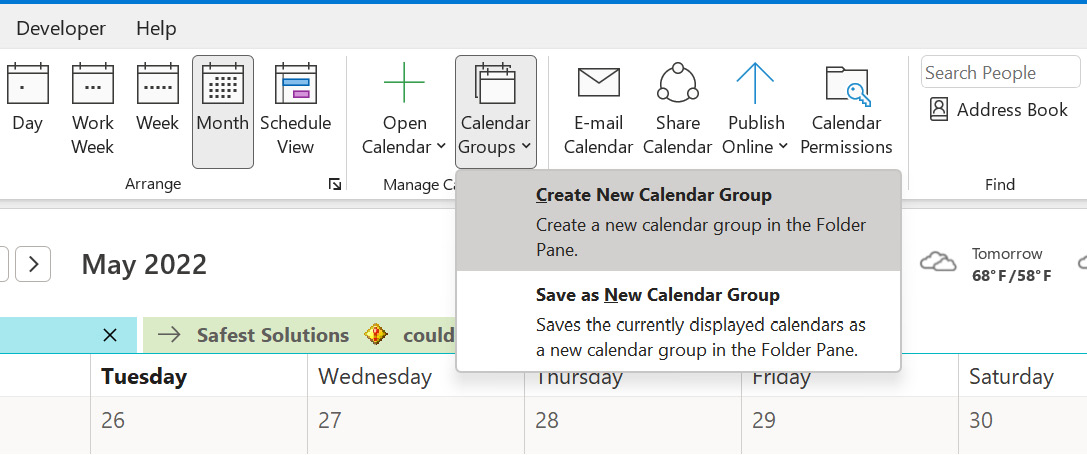
Figure 15.28 – The Create New Calendar Group option
- In the dialog box, type a name for the new calendar into the text area that is provided. For this example, we will create a calendar group called SSG Calendar. When you are done, click on OK:

Figure 15.29 – SSG Calendar
- Select Contacts from the address book to view all of the available contacts. Double-click on each contact to add them to the Group Members section at the bottom of the dialog box. Click on OK when done.
- The calendar information will display on your screen. If someone from your group has not shared their calendar, then you will not be able to view it. Click on the Send a sharing request to see more details for this Calendar icon in the bottom-right corner of each of the contacts in the calendar to see more details in the calendar:

Figure 15.30 – The Send a sharing request button
Each person is displayed in a different color on the calendar, and you can hide or display individual calendars using the group list on the left-hand side under the folder pane.
Creating and managing tasks
In this section, you'll learn how to create and manage a task so that you receive a reminder of items you need to complete by a certain date and a status report. Additionally, we will cover how to mark tasks as complete and assign a task to another Outlook user. Accepting and declining task assignments will also be covered in this section.
Creating tasks

Figure 15.31 – The Tasks button on the navigation bar
- In the task window, you will see any follow-up messages you have received, along with any outstanding tasks or to-do list items.
- Click on the Home tab and then select the New Task icon:

Figure 15.32 – The New Task button on the Home tab
- Fill out the details of the task:

Figure 15.33 – A new task pane
- Click on the Save & Close icon.
Note
Outlook items can be dragged to the Tasks icon in the Navigation Pane to create a task from the item. This is the quickest way to create a task as it fills in all required information from the Outlook item. Also, you can set a reminder for a task as you would with appointments.
Managing the task details
- Open a task to view its contents. Take a look at the Task and Details options in the Show group of the Task tab. This area is used to enter any secondary information about the task or to update the task.
- Click on the Save & Close icon to update and close the task.
Sending a status report
Sending an email to someone to let them know how far you have got with a task is really simple. Perform the following steps:
- Open the task, then select the Task tab.
- Click on the Send Status Report option in the Manage Task group:

Figure 15.34 – Send Status Report
- A new email is created with Task Status Report: Our Book Review as the subject (in this case, Our Book Review is the name of the task).
- In the body of the message, the task details are listed, indicating the percentage of completion. Note that the % Complete option will not work unless you diligently update the task as you work on it. Enter a recipient into the To… text area. Click on Send.
Now, let's look at how we would assign a task to others.
Assigning a task to another Outlook contact
It is really easy to assign tasks to others within the business or another contact within your Outlook address book. Perform the following steps:
- Create a task to assign to a colleague.
- Click on the Assign Task icon under the Manage Task group, which is located on the Task tab:
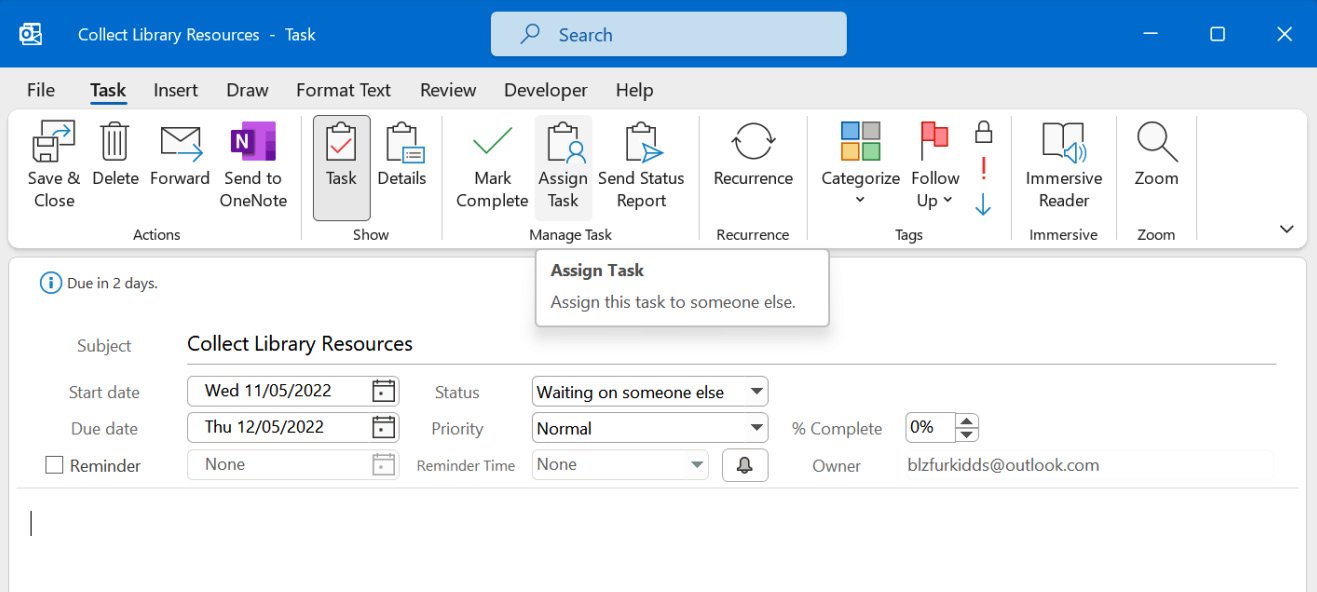
Figure 15.35 – The Assign Task option
- In the To… text area, type in an address to send the task to or click to populate the address book to select a contact. Make sure the task details have been filled in correctly. Click on Send.
Marking a task as complete
- Open the task that you want to update.
- Under the Task tab, locate the Mark Complete icon and click on it. Alternatively, select the task in the Tasks pane and then click on the Mark Complete icon:

Figure 15.36 – Marking a task as complete
- The task is marked as complete with strikethrough lines in the Tasks pane and a green tick in the flagged section of the view on the right-hand side:

Figure 15.37 – The Tasks pane showing a strikethrough in the completed task with a green tick
- Note that the task was automatically moved from the To-Do List pane to the Tasks pane when marked as complete.
Accepting or declining a task assignment
When we assign tasks to other users, they can decide to accept or reject the task. Let's run through the steps:
- In your inbox, open a task that you have received.
- Click Accept or Decline using the icons under the Respond ribbon.
Now we will take a look at notes and journal entries.
Creating and manipulating notes and journal entries
In this section, you will learn how to create a note, change the current view, and categorize notes.
Creating a note
A note is a useful space in which to jot down thoughts and ideas within Outlook 2021. You can drag notes from Outlook 2021 to your Windows desktop so that they are always visible, even when you are not in the Outlook application. Notes can be categorized in the same way as any other item within Outlook. OneNote is the master application that we can use, as this integrates with all of the Microsoft applications—we will concentrate on the OneNote features in the following chapters of this book:
- Click on the three dots at the bottom of the Navigation Pane to access the Notes option:

Figure 15.38 – The Notes window
- The Notes window will open. Click on the New Note icon to create a new note.
- The New Note icon opens at the top of the Outlook window in a separate window and can be moved to the desktop while Outlook is open:

Figure 15.39 – Creating a new note
- Once you have typed some text into your new note, close the note using the X symbol in the upper-right corner of the screen. The note is added to the Notes pane. The first line of the note's text becomes its title.
Changing the current view
Notes can be viewed in icons, lists, and the last 7 days' view. Click on the Icon view to change the view in the Current View group.
Categorizing notes
Notes are categorized just like other items in Outlook. To do so, perform the following steps:
- Select the note you want to categorize.
- Click on the Categorize icon under the Home tab.
- Select an existing category or click on All Categories… to assign a different category to the new note.
Working with journal entries
In this section, we will look at how to manipulate journal entries by recording Outlook items and folders and how to edit a journal entry. A journal records actions you choose that relate to different contacts and enters the information into a timeline. The journal can track meetings and email messages, along with other Office program files. The timeline shows all the items that have been sent, received, created, saved, or opened, as well as items that you have made changes to.
Tracking Outlook items and files
- Click on the three dots in the lower-right corner of the Navigation Pane.
- Choose Folders and then locate Journal. In this view, you will see any previously tracked items, and you will be able to create new ones:

Figure 15.40 – Navigating to the journal using the Folders button
- Click on the Home tab. Then, select Journal Entry from the New group to create a new entry. Enter a subject for the journal entry. Add details about the journal entry, such as Entry type and Start time.
- Start Timer is a very useful tool to track the amount of time a task takes—for example, you might track a client business call so that you can bill the client for your time:
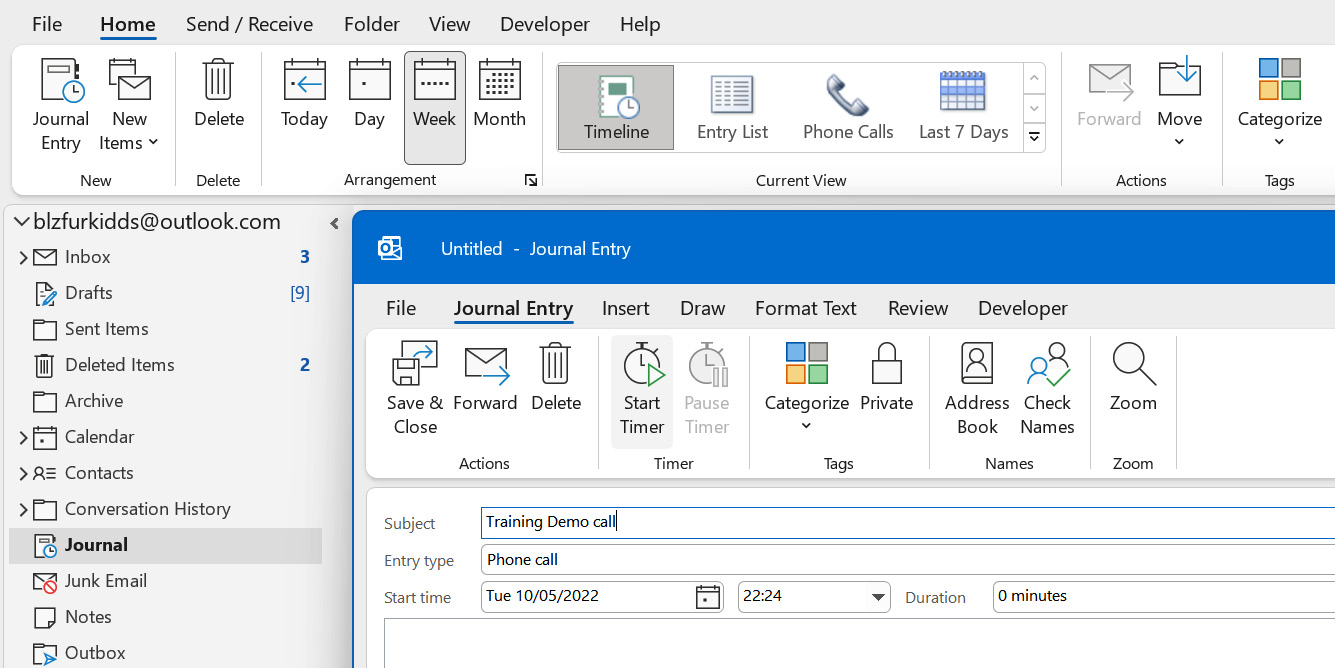
Figure 15.41 – Journal Entry
- Click on Save & Close to view the entry in the timeline. You can change the view to display the entries in a list by clicking on the Entry List icon under the Current View group:

Figure 15.42 – The Journal Entry List view
- To edit a journal entry, simply double-click on the entry in the Timeline view or the Entry List view. Make changes to the entry and then click on the Save & Close icon again to update it.
Setting out-of-office options
If you are going to be away from your desk or office for a long period of time (for example, if you are going on holiday or to a conference), you can set up an automatic reply that notifies others that you are unable to respond to incoming email messages. To do so, perform the following steps:
- Click on File. Then, choose Automatic Replies from the Backstage view.
- In the Automatic Replies dialog box, click on Send automatic replies. Make sure that Only send during this time range: is selected if you are only going to be out of the office for a set amount of time—for example, for annual leave or maternity leave.
- Enter the Start time and End time criteria. Then, add an explanatory note in the space provided under the Automatic replies section. Note that you can format your message using the formatting options located on the Automatic replies tab. Click on OK to set the automatic reply:

Figure 15.43 – Setting an out-of-office reply
The automatic reply is set and all messages that you receive are automatically responded to with this message, highlighting that you are away from the office and for how long.
- When you visit your inbox, you will see a yellow notification, just under the ribbon, indicating that you have an automatic reply set on your mailbox:

Figure 15.44 – Automatic Replies set on the mailbox
- Click on Turn off to remove the setting from your mailbox so others no longer receive the out-of-office return email. The out-of-office message is stored in the Automatic Replies area if you wish to use the same message again in the future—just remember to change the dates, times, and message.
In a later chapter of this book, we will look at the same feature in the Teams app. This feature is actioned when an automatic reply is set in the Outlook application and will pull through to the Teams environment.
Summary
In this final chapter, you mastered working with notes, tasks, the calendar, and the journal in Outlook 2021. You should now feel confident in creating and managing these items and working with the different views and options that are available. Now when you are out of the office, you understand how to set up the option to send automatic replies to recipients and how to turn this setting off on your return. You have learned how to manipulate calendar views, change the calendar color, and set up a calendar group. Additionally, you should now be proficient with how to create and categorize notes and change the Notes view.
In the next chapter, we will concentrate on online meetings. We will learn all about the Teams application and discover top tips when working with Teams channels, learn how to collaborate with others, and learn how to work with files within the Teams environment. Additionally, we will concentrate on the remote meeting space and learn how to present with PowerPoint in a Teams meeting.
